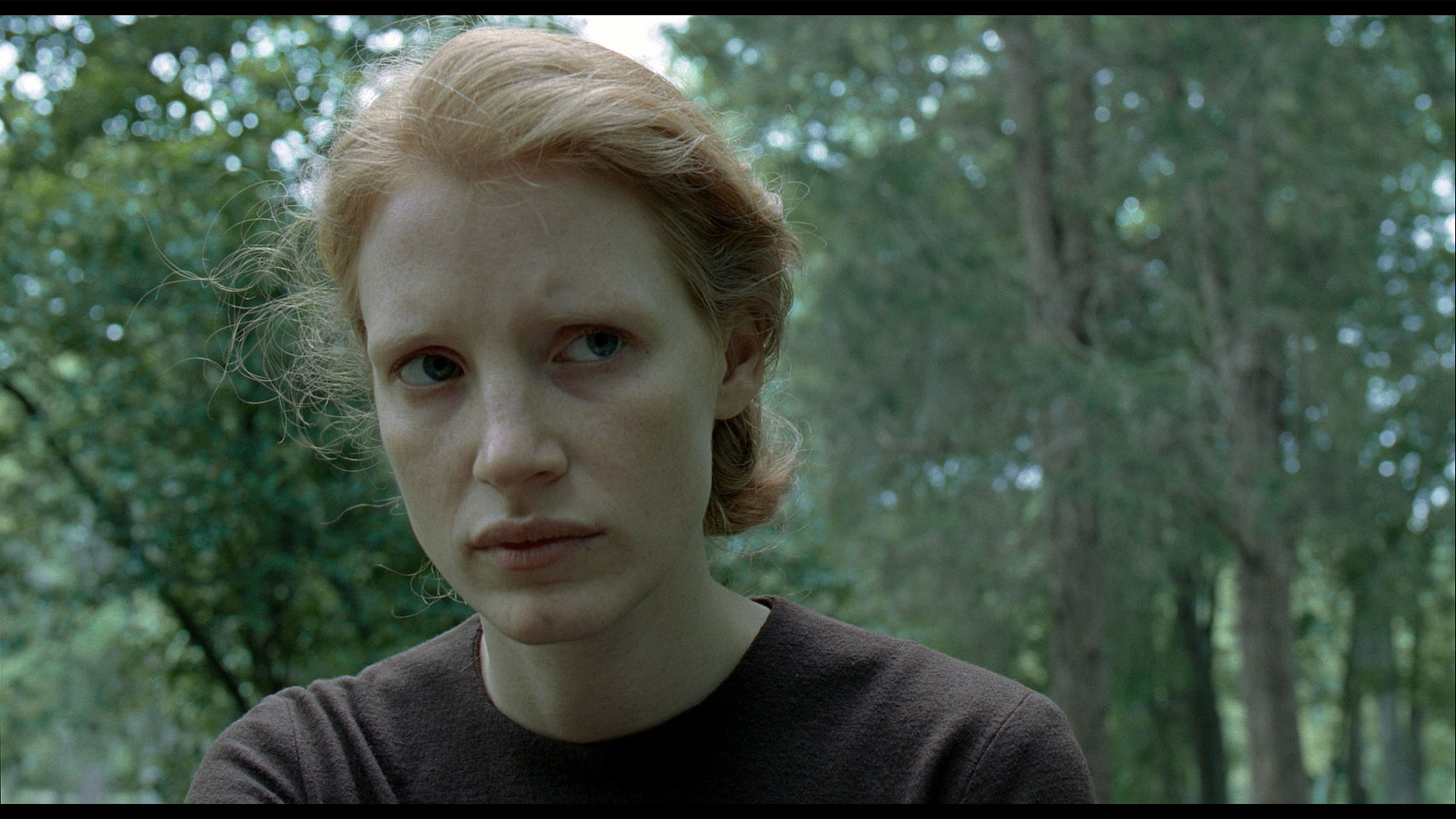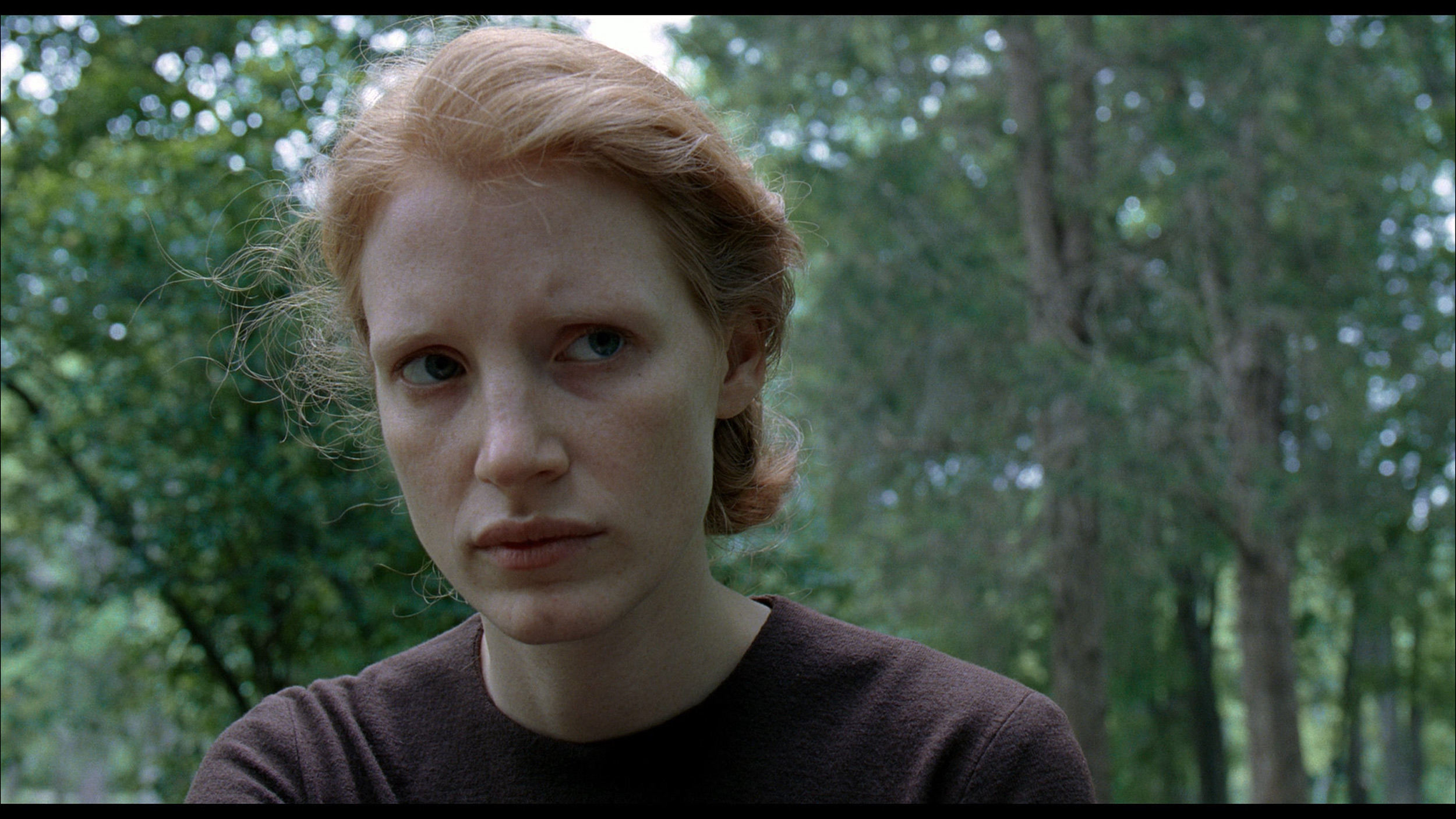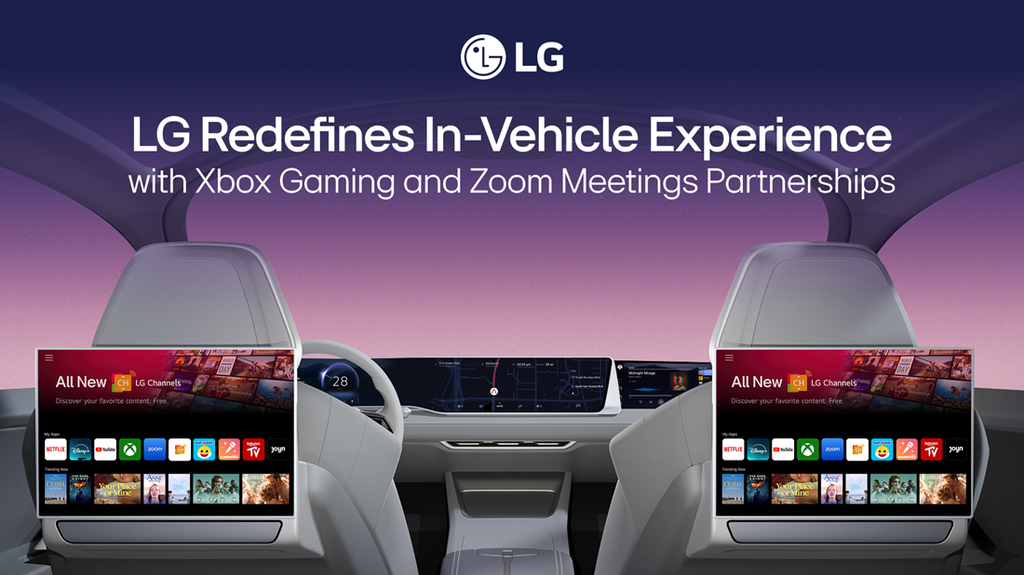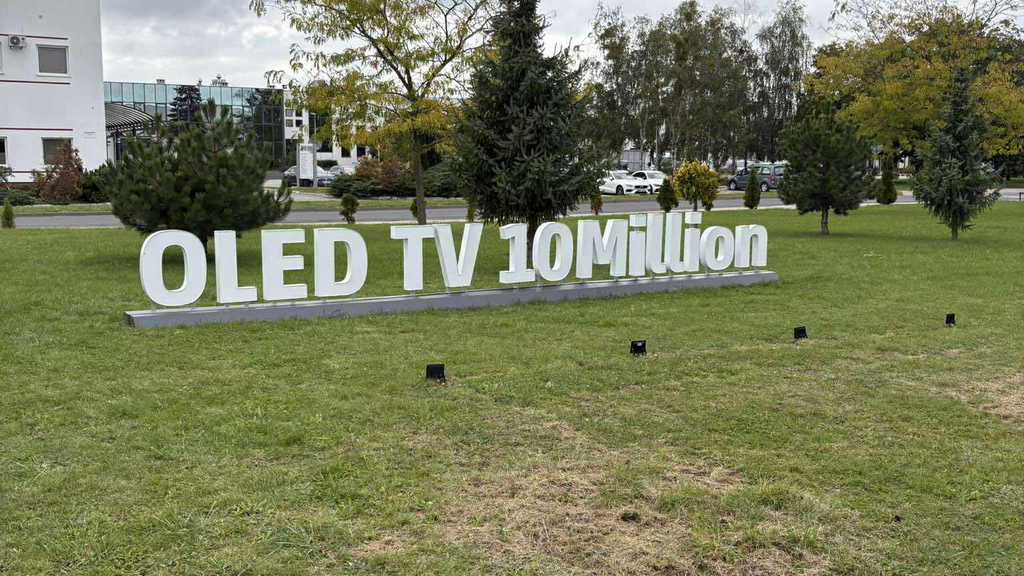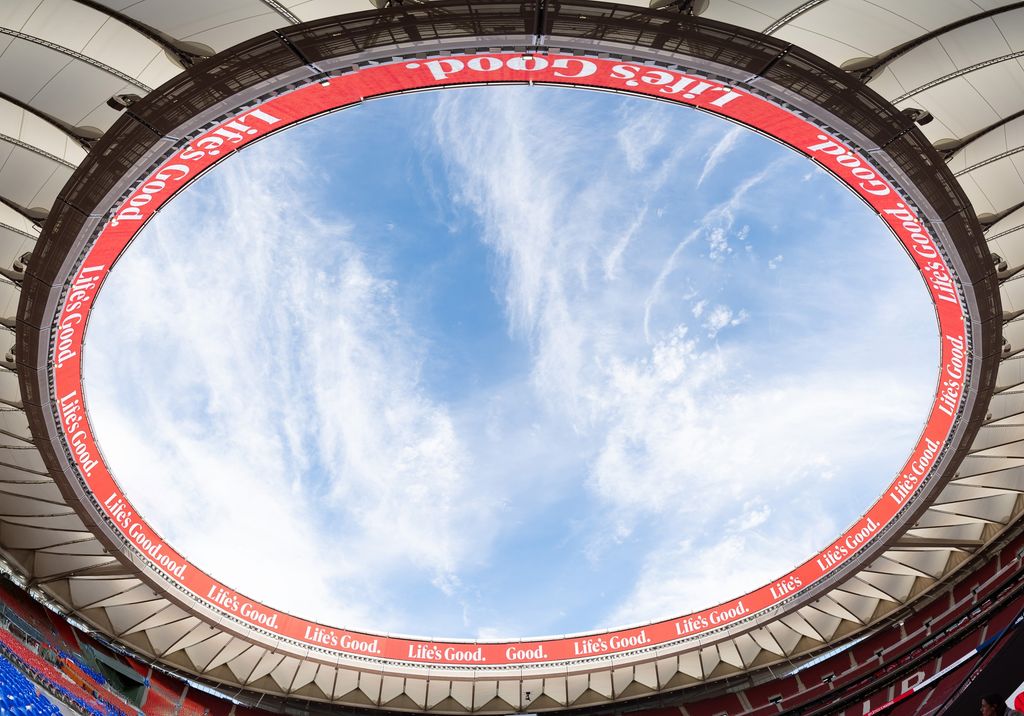- Matching (Score)
- Our verdict
- Competing TVs
- TV appearance
- Where to buy
- Contrast and black detail
- HDR effect quality
- Factory color reproduction
- Color reproduction after calibration
- Smoothness of tonal transitions
- Image scaling and smoothness of tonal transitions
- Blur and motion smoothness
- Console compatibility and gaming features
- Input lag
- Compatibility with PC
- Viewing angles
- Daytime performance
- TV features
- Apps
- Playing files from USB
- Sound
- Panel details
LG UA75006LA (VA) Review
Available screen sizes:
Diagonal with a different matrix:
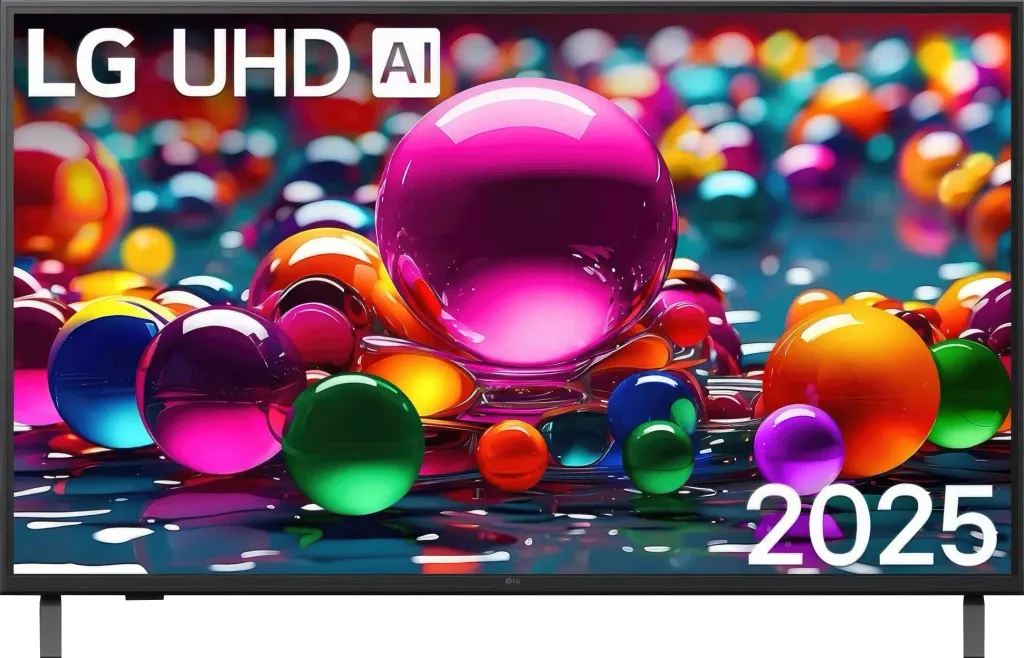
Complete the survey to find out the result
Panel type: LCD VA Refresh rate: 60Hz Brand: LG Resolution: 3840x2160 System: WebOS Model year: 2025
The UHD series from LG has been regarded for years as one of the cheapest options on the market, and the UA7500 model is its latest representative in 2025. Depending on the chosen size, one can come across different panel variants – in this case, we are looking at the version with a VA panel. A natural question arises: does such a cheap television actually make sense? And if so, who will be the best choice for it?
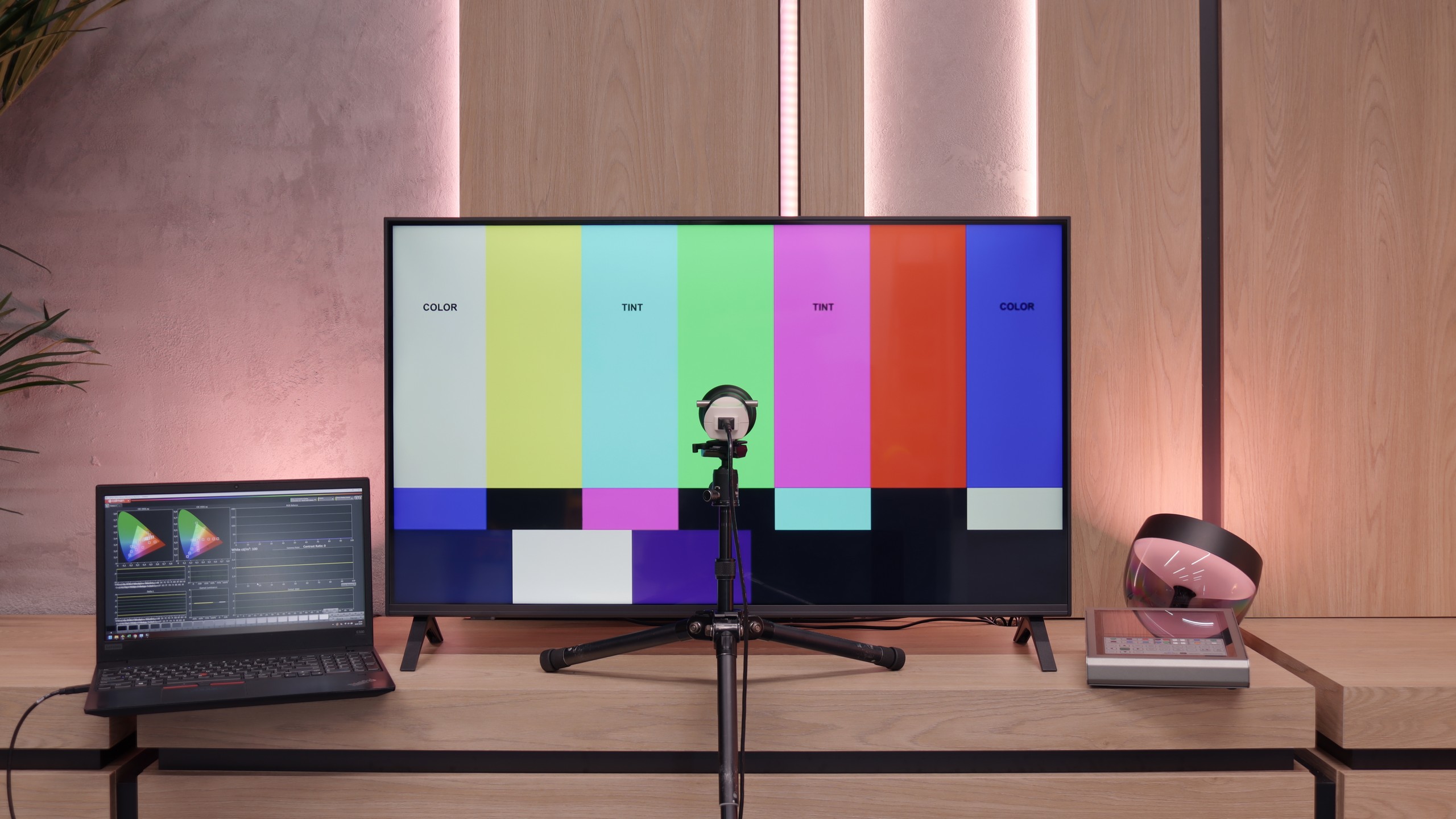
LG UA75006LA - Our verdict
6.0
Overall rating
LG UA7500 with a VA panel is a television designed for everyday viewing of television, YouTube, or streaming platforms, where SDR content still dominates. It performs very well in this role – it has decent digital image processing, respectable upscaling, and quite coherent tonal transitions. The biggest advantage remains the webOS system, full of applications and features, such as USB recording, AirPlay support, and screen mirroring. For many people, this is enough to consider it a “television for daily use.” It will also perform reasonably well as a screen for the occasional gamer – although it only has a 60 Hz panel, it features ALLM, VRR in the 48–60 Hz range, and a convenient Game Bar, which are usually reserved for more expensive models. Downsides? Primarily the viewing angles – as is the case with VA, the image quickly loses quality from the side. There are also no dynamic HDR formats, and the limited colour palette means that cinematic “HDR effects” are minimal. On the other hand, it is an affordable television that is likely to see appealing discounts, so if someone doesn’t want to spend a fortune and accepts its limitations, they get a solid “basic model” with a good system. It’s just a shame the manufacturer didn’t include a Magic remote in the package.
Advantages
High native contrast (VA Panel), better black levels, less "flattened" image in evening screenings
Correct upscaling and decent tonal transition gradation
webOS system with a rich app base and support for AirPlay
Ability to record to USB from built-in tuners
Low input lag (below 10 ms)
Friendly for the "casual gamer": ALLM, VRR (48–60 Hz), Game Bar, HGiG
Disadvantages
Limited colour gamut coverage (approx. 80% DCI-P3), rather symbolic HDR
No dynamic HDR formats (Dolby Vision, HDR10+)
Typical off-axis viewing issues for VA panels
Quite a plastic housing and no Magic remote included in the package
Movies and series in UHD quality
6.0
Classic TV, YouTube
6.1
Sports broadcasts (TV and apps)
5.0
Gaming on console
6.9
TV as a computer monitor
5.4
Watching in bright light
4.6
Utility functions
7.0
Apps
9.1
Sound quality
6.0
Complete the survey to find out what fits your preferences
LG UA75006LA - Competing TVs in this price range
LG UA75006LA - TV appearance
HDMI inputs: 3 x HDMI 2.0, 0 x HDMI 2.1 Outputs: Toslink (Optical audio), eARC (HDMI), ARC (HDMI) Network Interfaces: Wi-Fi 2.4GHz, Wi-Fi 5GHz, Ethernet (LAN) 100Mbps
Build quality: Average
Stand type: Legs
Bezel color: Graphite
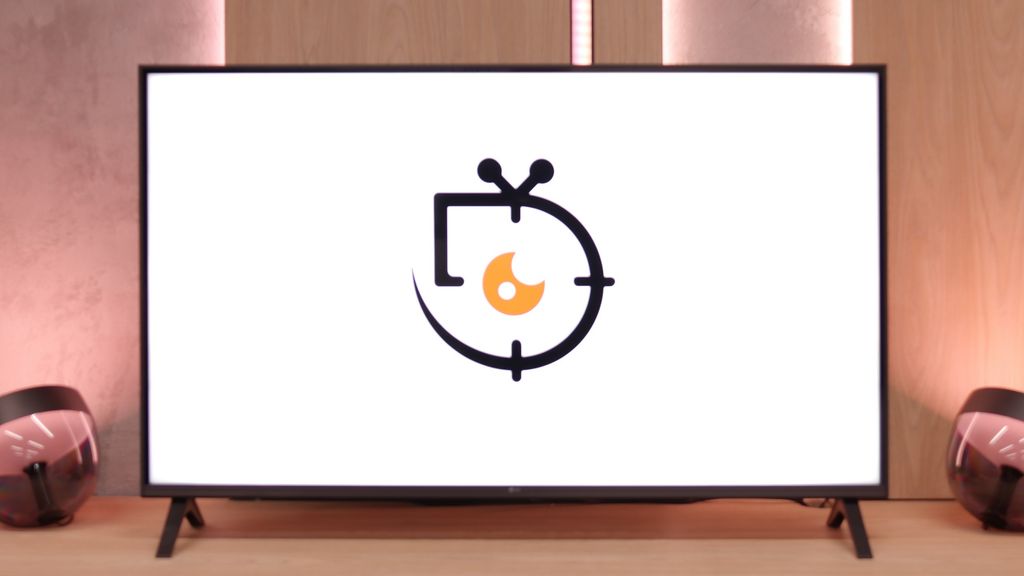
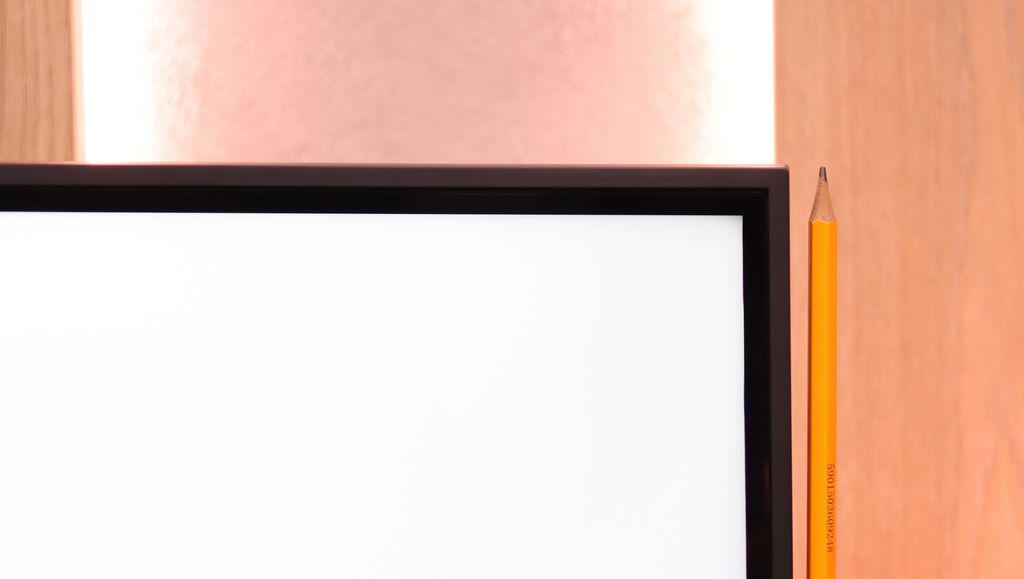
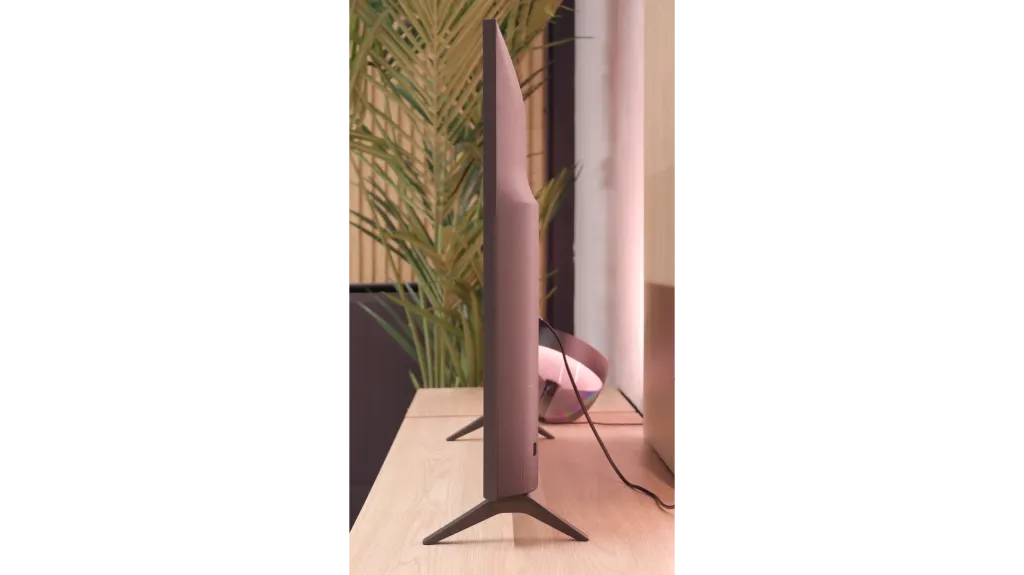
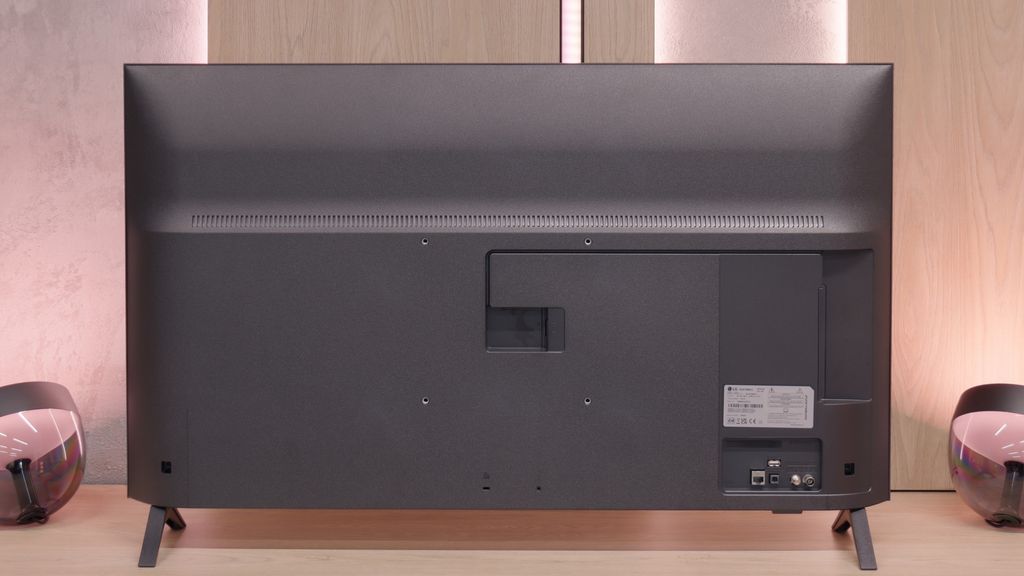

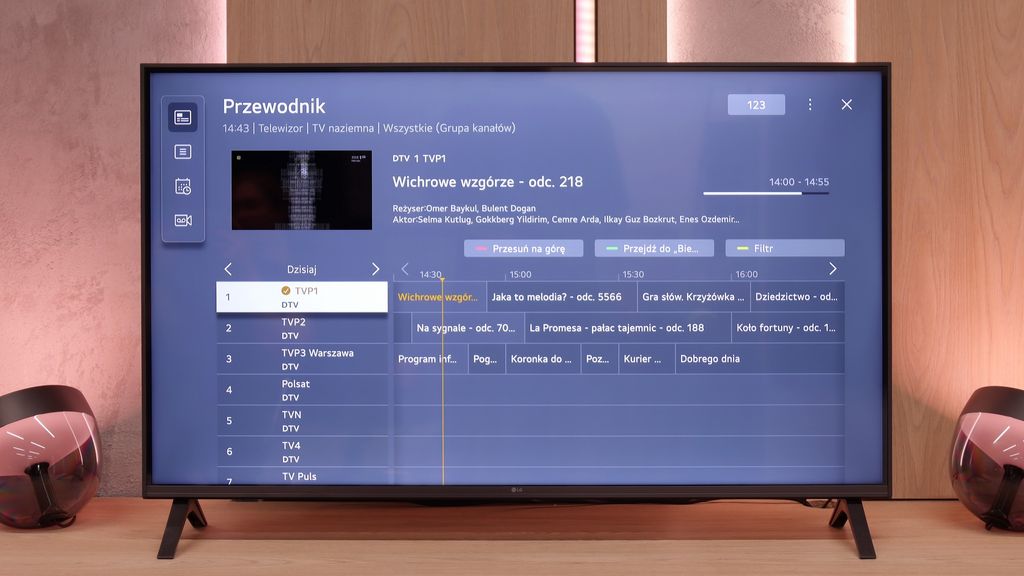
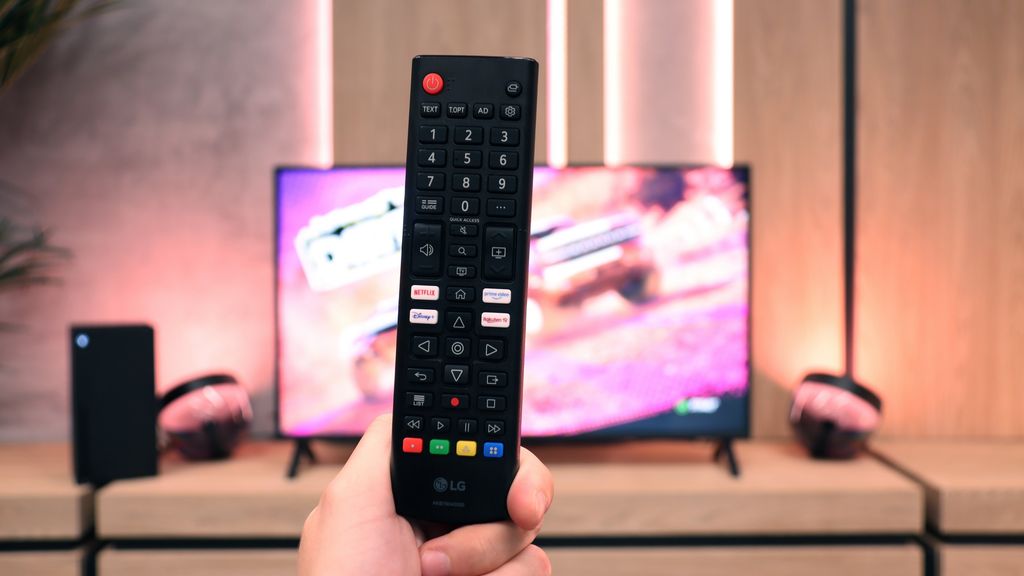
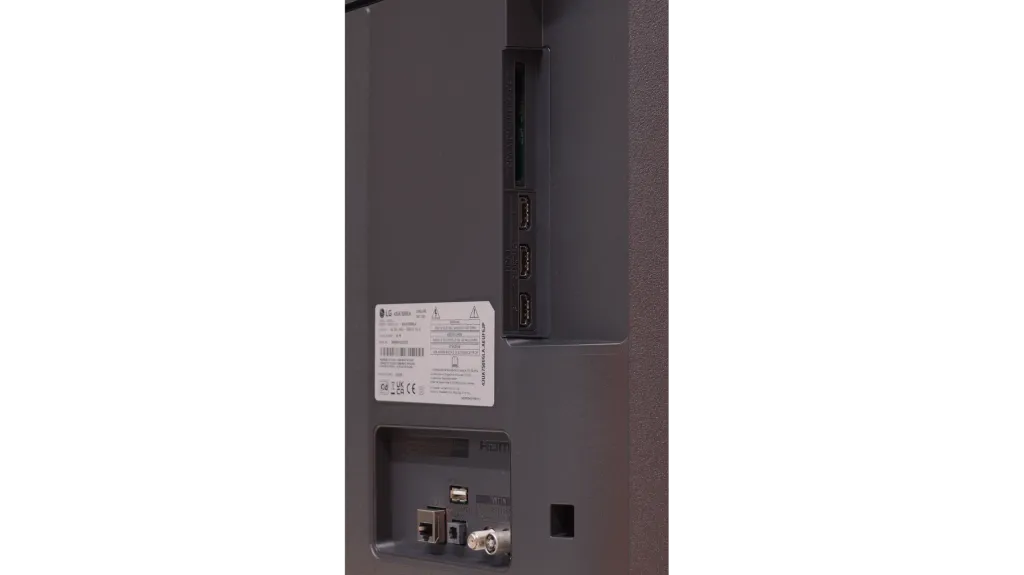
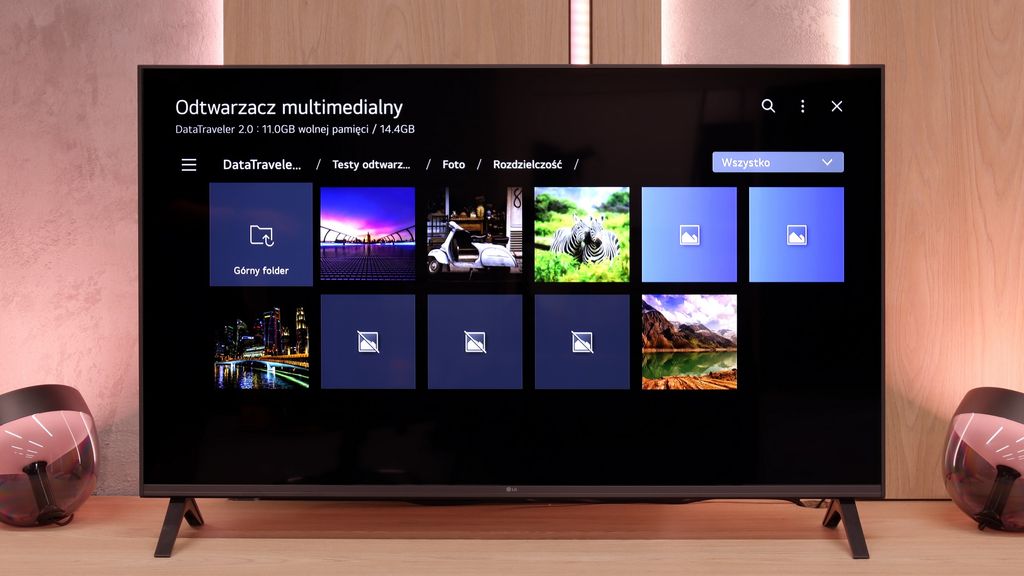
Stand: Fixed
Flat design: No
Accessories: Stand
At first glance, it is clear that the LG UA7500 belongs to the mid-range class. The television looks quite neat, although its bezels are rather thick and immediately remind us that we are not dealing with a premium model. The construction is mainly made of plastic, which immediately conveys the budget character of the device. Looking from the side, we notice that the casing is quite chunky, and when mounted on the wall, the screen does not fit perfectly, causing it to jut out slightly. For those who prefer to place the television on a cabinet, the manufacturer has prepared two widely spaced stands. This ensures that the whole unit stands steadily, although it requires more surface area on the furniture.
Buy at the best price
Select size:
LG UA75006LA - Contrast and black detail
5.8/10
Local dimming function: No

Result
6,350:1

Result
5,800:1

Result
4,350:1

Result
4,500:1

Result
4,900:1
Visibility of details in the lights:
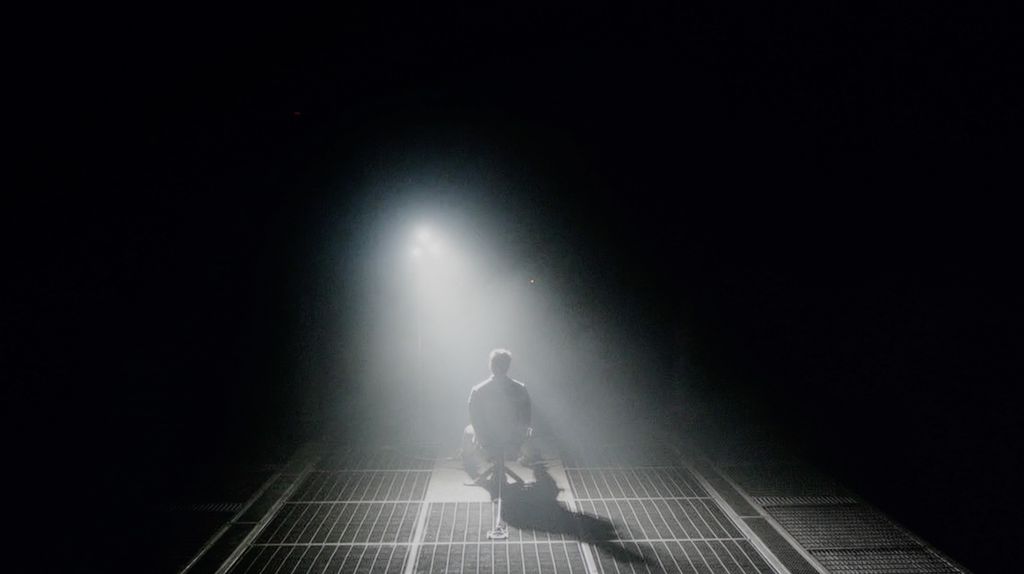
This is where the greatest advantage of the VA panel version begins. A contrast ratio of around 6000:1 means that during evening viewing, the image gains depth, and darker scenes in films look natural and do not wash out to grey. It is clear that the blacks are much better than in the IPS panel version, and it is this difference that defines the character of the television. Of course, one must remember that the UA7500 lacks local dimming, so one shouldn't expect miracles. The darkest scenes cannot compete with more expensive televisions, but at least the contrast is stable and sufficient for evening screenings to be convincing.
Halo effect and black detail visibility:
LG UA75006LA - HDR effect quality
4.3/10
Supported formats: HDR10, HLG Color gamut coverage: DCI P3: 79.4%, Bt.2020: 59.2%
Luminance measurements in HDR:

Result
300 nit

Result
263 nit

Result
366 nit

Result
218 nit

Result
351 nit
The LG UA7500 with a VA panel holds brightness at around 350 nits, which does not make a significant impression by today's standards. It is hard to speak of a true HDR experience here – most content looks more like classic SDR with a slight attempt at boosting the highlights. The advantage is that regardless of the tested scene, the effect remained relatively stable. However, we noticed that in very extreme scenes with a lot of fine details, the television can gently dim the image to achieve better black levels, but this comes at the expense of visibility of bright effects. It is also worth noting that the UA7500 is not equipped with any additional technologies for expanding colours. It is neither a QLED panel nor PFS LED, which is why the coverage of the DCI-P3 colour gamut is only 80%, making many HDR films appear flat and not conveying the full diversity of colours.
Scene from the movie “Pan” (about 2800 nits)

Scene from the movie “Billy Lynn” (about 1100 nits)

Our measurements were not just dry numbers – they quickly found confirmation when we reached for demanding test films. In the scene from Mr, where the image is bursting with strong contrasts and details, the UA7500 struggled to fully separate the bright and dark elements. The sun in the distance appeared completely washed out, and the overall image lacked the clarity one would expect from good HDR. The limited colour palette was even more apparent here – when a television equipped with additional filters to widen the gamut stood next to it, the difference was immediately noticeable. It looked slightly better in more grounded productions, such as Billy Lynn, mastered to 1000 nits – which is the value we most often encounter on streaming platforms like Netflix. In such content, it was evident that the activated dynamic tone mapping feature could save the image to some extent. The television gained detail in the bright elements, and the colours achieved at least minimal consistency. It was still far from perfection, but at least in everyday use, the UA7500 did not give the impression of being completely helpless.
HDR luminance chart:
HDR luminance
LG UA7500 has not been equipped with any dynamic HDR formats. There is neither Dolby Vision nor HDR10+, which are often what gives a second life to the image in lower-end televisions. It only takes starting a film on a streaming platform to notice the difference – many productions are recorded and mastered in these standards, allowing even average panels to extract more from themselves. In the case of the UA7500, that "lifebuoy" simply does not exist. It has been thrown into the deep end, and the only board keeping it afloat remains the aforementioned dynamic tone mapping feature. This solution is built into the television, automatically adjusting brightness and contrast to the scene. It works quite well, but it cannot fully replace formats with dynamic metadata.
Static HDR10

Factory color reproduction
5.6/10
The Filmmaker mode on the LG UA7500 performs better than one might expect from such a budget television, but let’s not get carried away with praise. The image is put together quite sensibly and does not irritate at first glance, however, its weaknesses quickly become apparent. This is most evident in scenes with bright points – background lamps or reflections of light on the skin are distinctly exaggerated. The faces of the characters often look unnatural, as if they have been 'overexposed'. Added to this is the default gamma characteristic, which brightens the smallest details and causes the image to lose subtlety in darker areas. Nevertheless, it is a fact that for its price range, the UA7500 in factory mode provides a fairly decent starting point. However, it is clear that without additional adjustment, it will not be possible to avoid these problems, which is why – as with other televisions – we decided to see what could be achieved after calibration.
Color reproduction after calibration
7/10
The biggest improvement we noticed was when calibrating the mode intended for everyday SDR content. We managed to smooth out the white balance in an acceptable way and tackle the problem of excessive brightening of fine details due to the gamma curve. As a result, the image gained the consistency and naturalness that was missing in the factory settings. After such adjustments, we can confidently state that for everyday television content, programmes, or materials from YouTube, the LG UA7500 performs very well – especially after professional calibration. The situation is somewhat different for HDR content. Here, calibration allowed us to tame the white balance and slightly improve the brightness management; however, the limitations of the construction are immediately apparent. The lack of additional filters to widen the colour palette results in the most vivid colours appearing flat, and the image does not display the intensity we would expect from good HDR. So in SDR, the UA7500 performs quite well, but in HDR – despite corrections – it remains far behind, and this is a characteristic that one must accept when choosing this television.


LG UA75006LA - Smoothness of tonal transitions
8.8/10
The colour transitions in most scenes were smooth and hard for the average viewer to notice. However, the VA matrix variant provided something more – in the darker parts of the image, one could see significantly more shades, as the higher contrast allowed them to be brought out better. As a result, the image did not appear flattened and looked more natural. The transitions between colours themselves generally looked quite good and did not distract from the content.


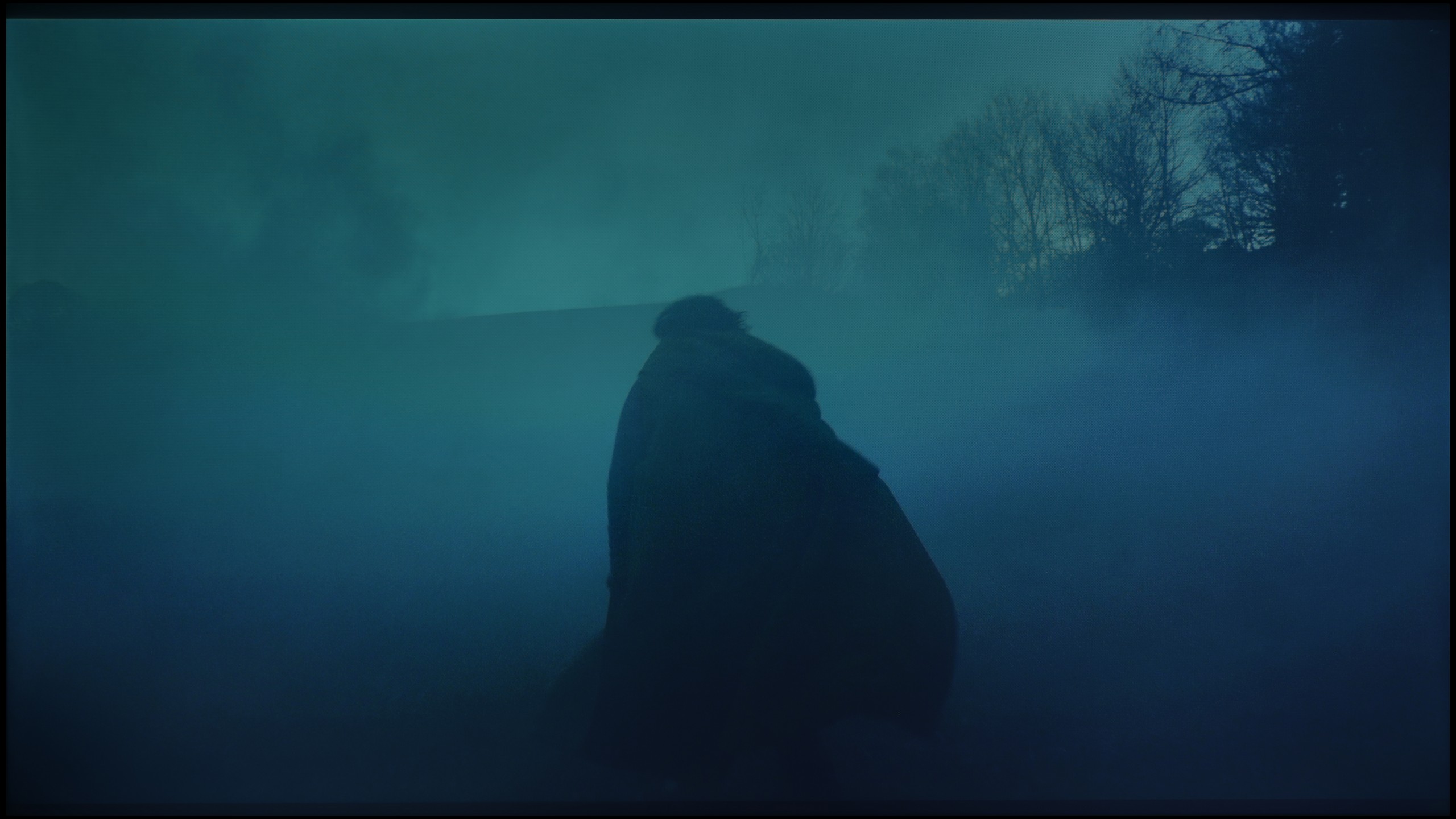
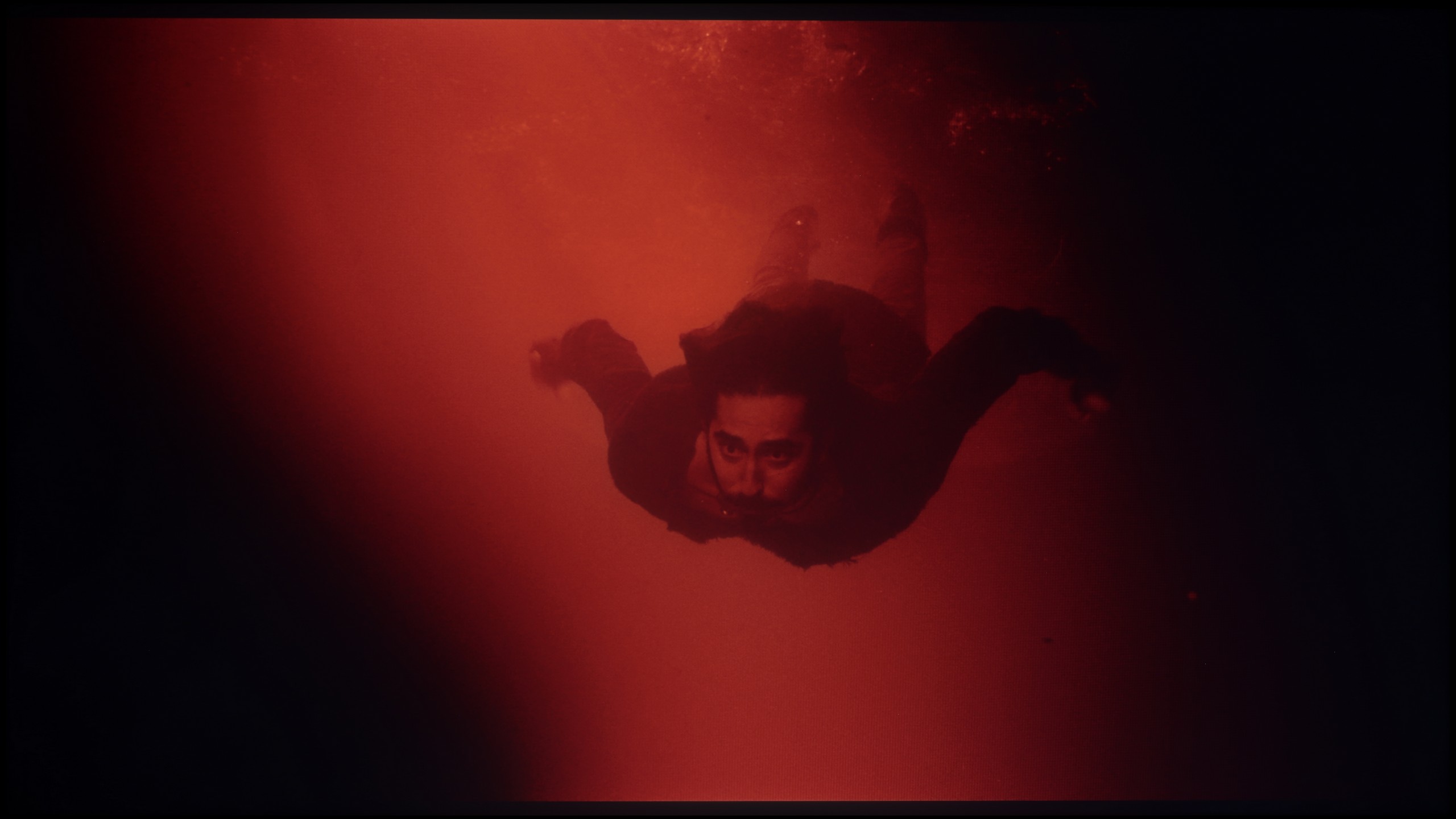




Image scaling and smoothness of tonal transitions
7/10
Smooth transition function
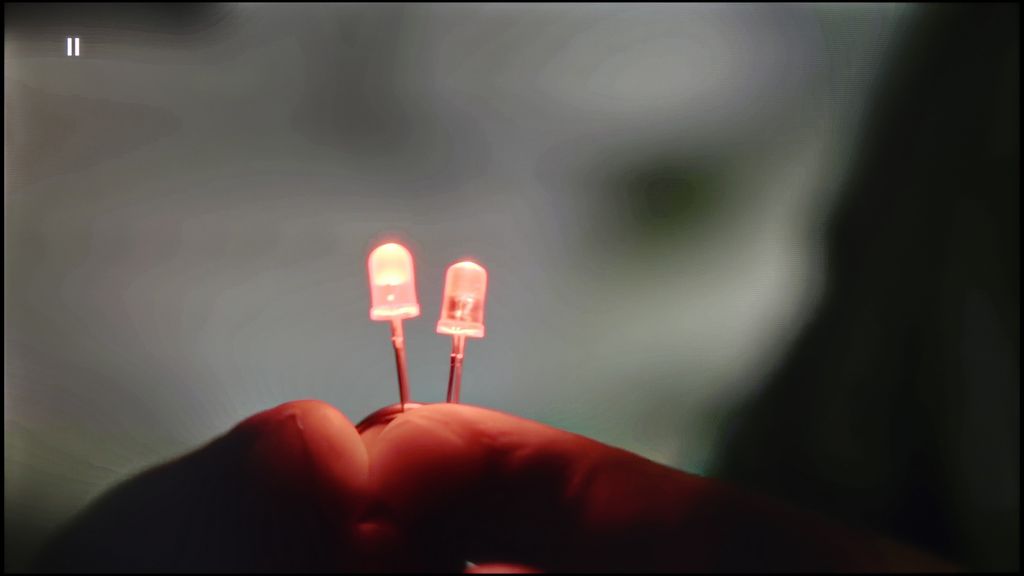
Image without overscan on the SD signal

LG UA7500 with a VA panel performed really well in this category. Image scaling from Full HD or even SD materials was surprisingly smooth. The picture looked smooth, edges were not overly jagged, and the television retained a considerable amount of detail, meaning that even older films did not lose their character. It particularly excelled with faces – there were no artificial contours or 'mask' effects, which often occur in cheaper models. The way the television handled tonal transitions in lower quality materials is also noteworthy. Thanks to digital processing, colours did not bleed into each other, and gradients appeared natural and smooth. There was no excessive smoothing of the image or loss of cinematic grain. This makes the UA7500 great for everyday content – from terrestrial television, through sports, to YouTube, where we often watch materials in various resolutions.
LG UA75006LA - Blur and motion smoothness
4/10
Maximum refresh rate of the panel: 60Hz
Film motion smoothing option: Yes
Blur reduction option: No
BFI function 60Hz: No
BFI function 120Hz: No
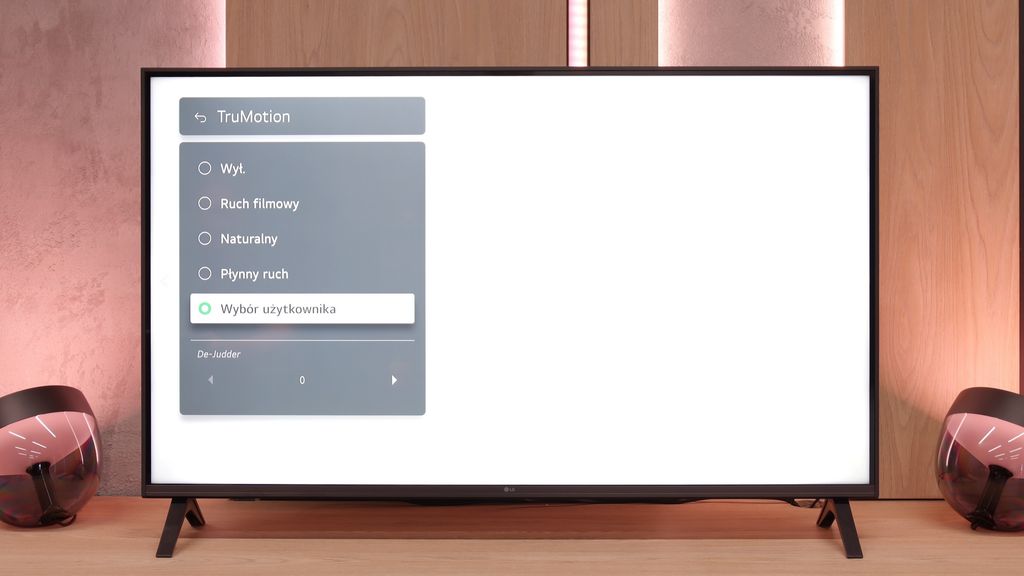
The LG UA7500 is a television with a 60 Hz panel, so it's difficult to expect much admiration in this category. It's more of a screen intended for everyday content or an evening film viewing rather than for following dynamic sporting events or playing action games. It's clear that the manufacturer targeted this model specifically at that group of consumers – and it performs correctly in that regard. We have the TruMotion feature available, which is a motion smoother. It's simple, with only one slider, but it can introduce a noticeable difference. At the lower settings, the image appears more raw and cinematic, whereas at higher values, the motion becomes smoother and more pleasing to the eye.
Blur (native resolution, maximum refresh rate):
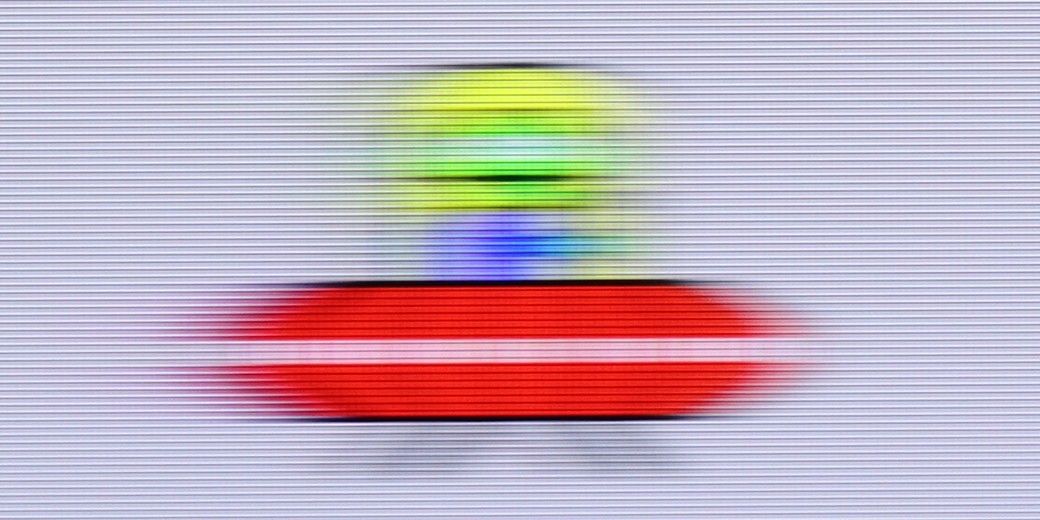
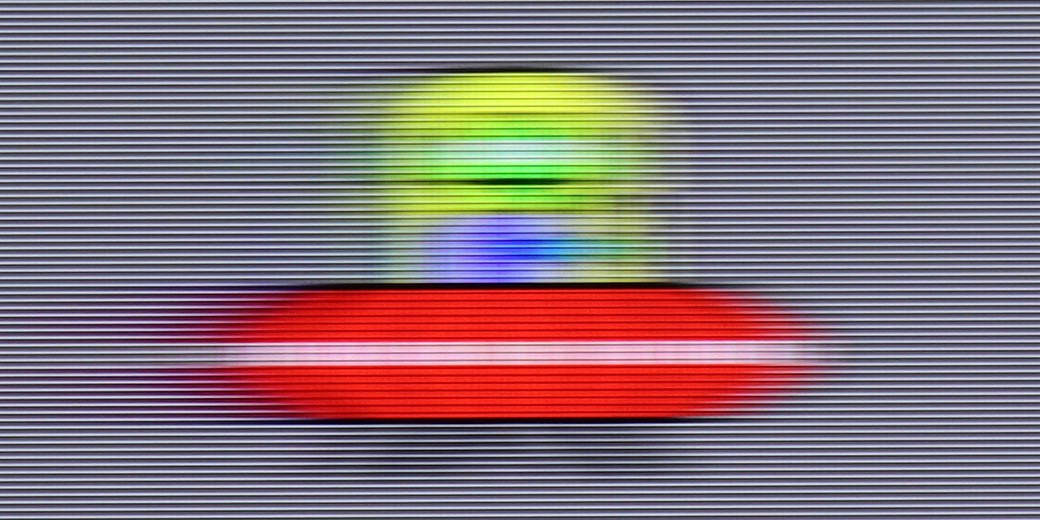
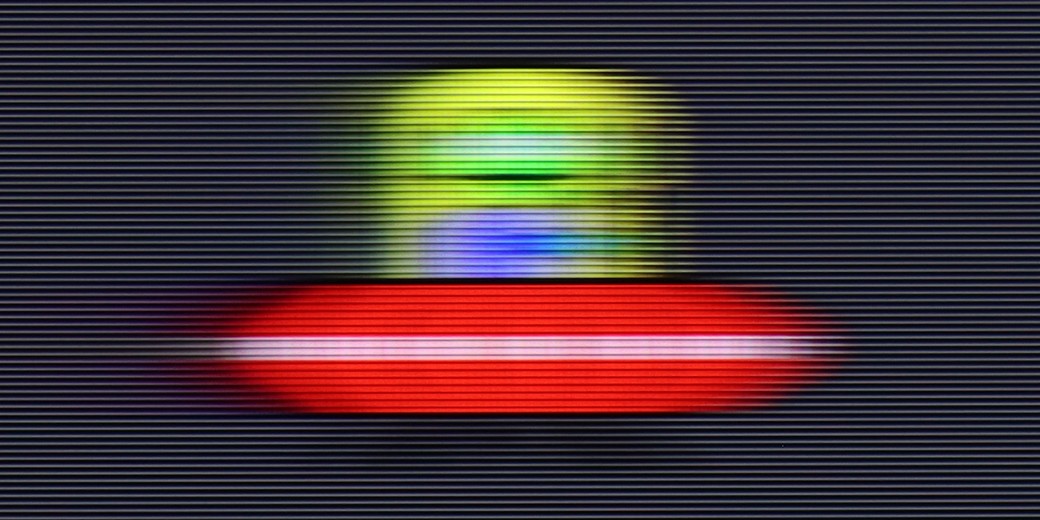
The version with the VA panel performed well here, although it is undeniable that during very fast movements the image could leave a slight "trail". Motion blur was particularly noticeable in tests of dynamic scenes, where the camera panned sideways or when quickly moving objects appeared on the screen. This is not something that completely spoils the viewing experience, but a discerning eye will notice the difference and the image will not be as crisp as in more expensive televisions with a 120Hz panel.
LG UA75006LA - Console compatibility and gaming features
6/10
ALLM: Yes
VRR: Yes
VRR range: 48 - 60Hz
Dolby Vision Game Mode: No
Correct implementation of HGIG: Yes
1080p@120Hz: No
1440p@120Hz: No
4K@120Hz: No
Game bar: Yes
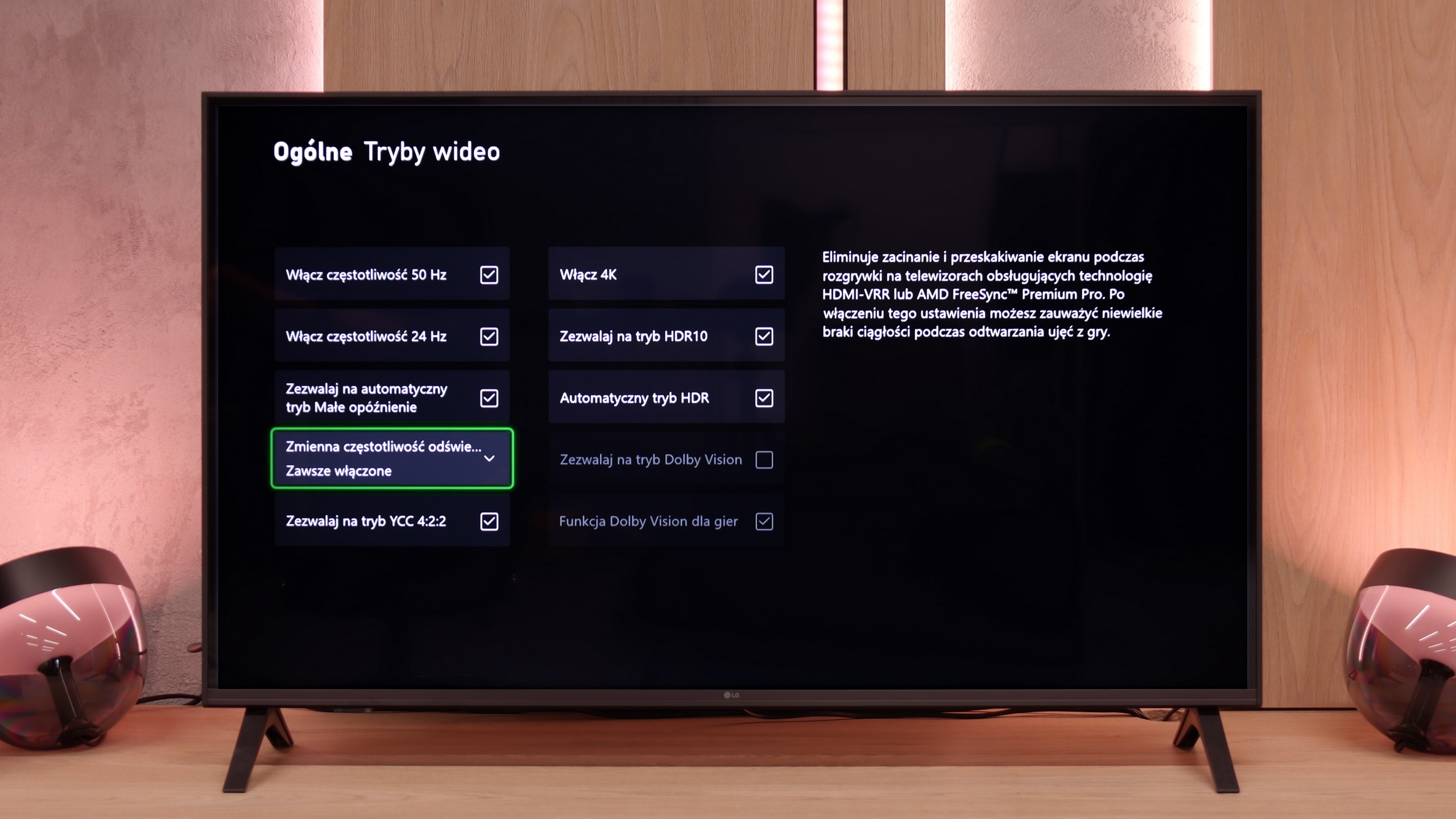
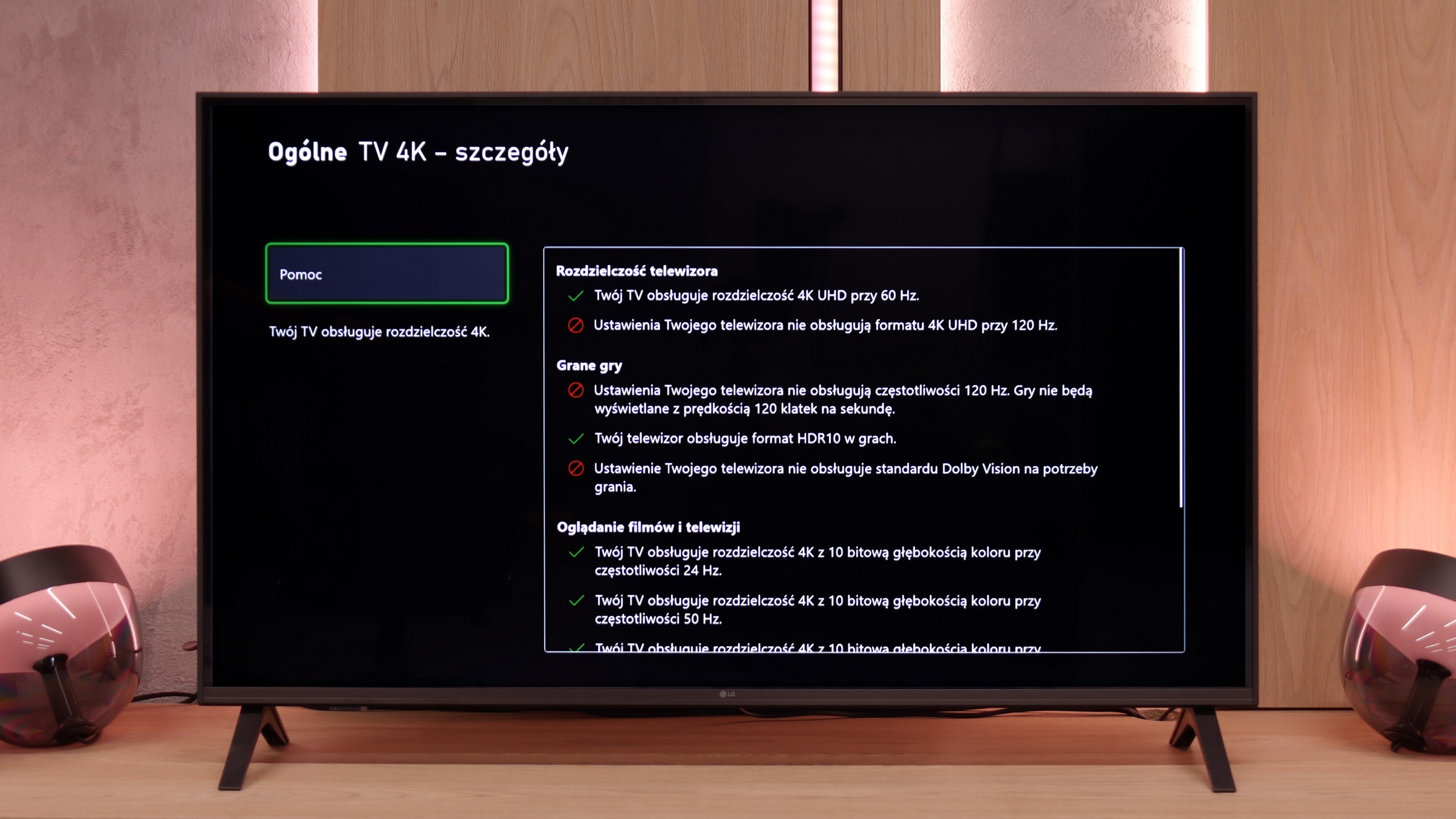
The LG UA7500 is a television that can be confidently recommended to "casual" gamers. It lacks a 120 Hz panel and HDMI 2.1 ports, so it cannot fully utilise the potential of modern consoles. However, the manufacturer has included several features that can enhance the gaming experience. Notably, the Game Bar stands out – a very well-designed panel where you can quickly preview and change the most important settings. From this interface, we have access to features like ALLM mode (automatic switching to game mode) and frame synchronization, which is VRR. The VRR range is limited – it works from 48 to 60 Hz – but the mere presence of this feature in such an affordable television makes a positive impression.
Additionally, it supports HGiG, which is the HDR calibration mode for gaming. It sounds good, but based on our testing experiences, we already know that for the UA7500, this option doesn't make much sense. The television doesn't handle HDR very well, so paradoxically, we achieved better results with this mode disabled. This is another indication that the UA7500 is more of a screen for occasional gamers who value simplicity and convenience rather than for those seeking the full experience from the latest consoles.
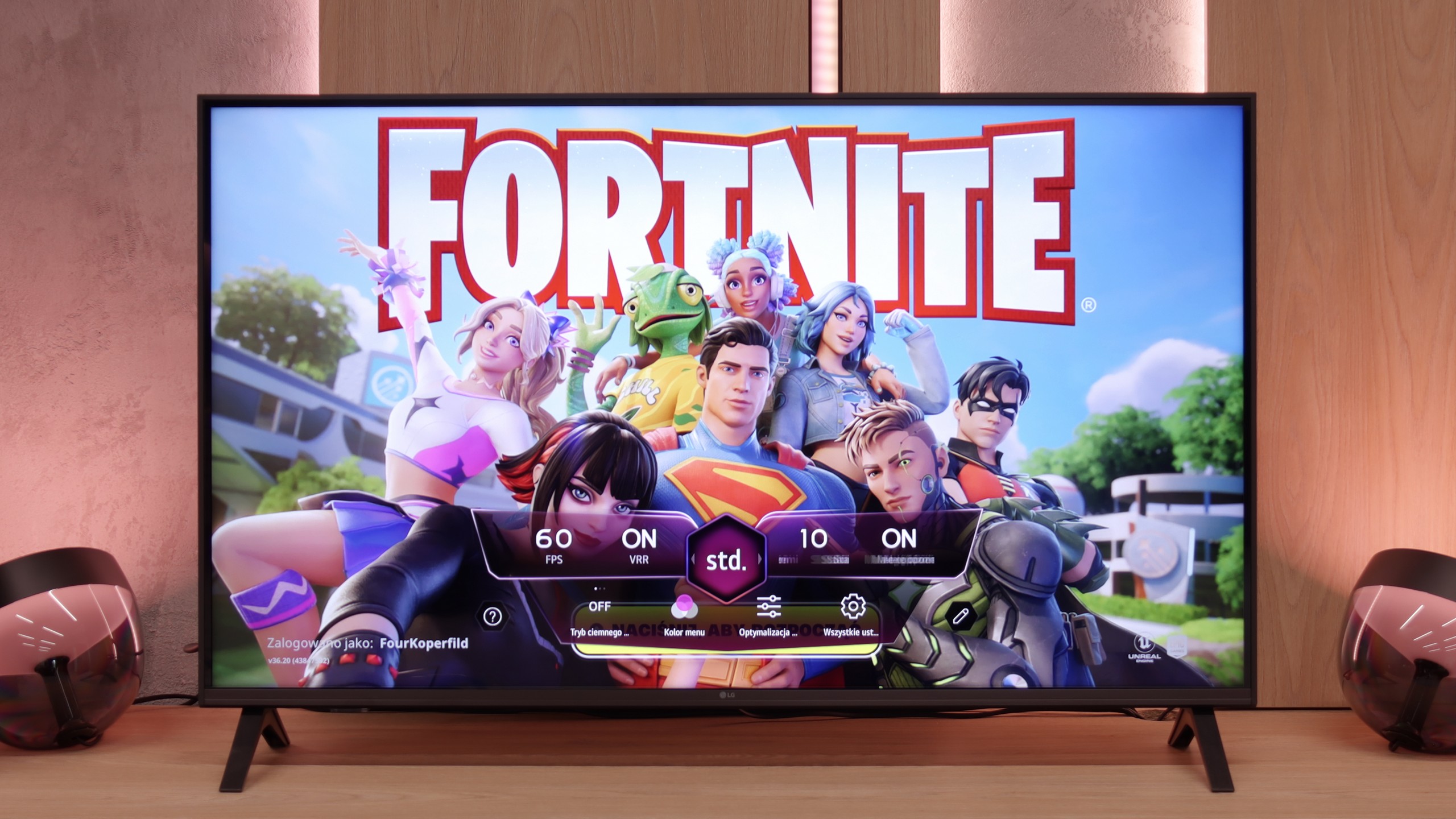
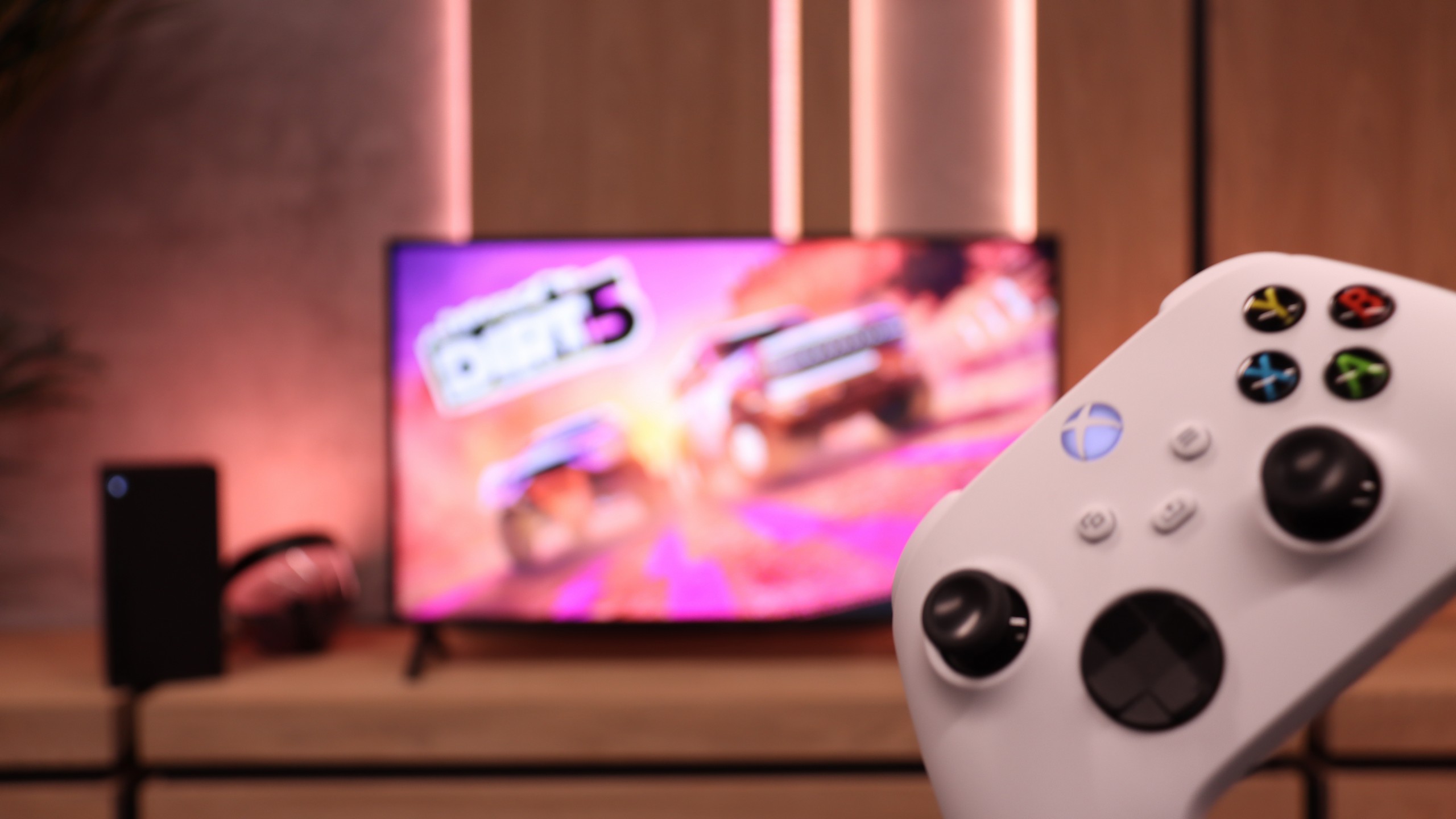

LG UA75006LA - Input lag
10/10
A delay of below 10 ms is a result that more expensive models could easily envy. This ensures that games run exceptionally responsively, with every action on the controller immediately visible on the screen. This is one of the strongest points of this television, particularly for those who enjoy firing up a console from time to time.
| SDR | HDR | Dolby Vision |
|---|---|---|
| 1080p60: 10 ms | 2160p60: 10 ms | |
| 2160p60: 10 ms |

LG UA75006LA - Compatibility with PC
5.4/10
Chroma 444 (maximum resolution and refresh rate): Yes
Font clarity: Very Good
Readability of dark text and shapes: Good
Input lag in PC mode (4K, maximum refresh rate): 10ms
Matrix subpixel arrangement: BGR
Max refresh rate: 60Hz
G-Sync: No
The LG UA7500 with a VA panel performs somewhat weaker in this regard. The fonts are not as crystal clear as with IPS, and after prolonged use, the difference in readability can be felt. Support for 4:4:4 chroma is of course available, so colours appear correct, but overall it does not provide such a comfortable effect. In everyday use, the differences may not be significant, but for work with text and graphics, IPS proves to be a much better choice. The VA version is more suited as a versatile television with the option to connect a PC, rather than a fully-fledged office tool.
LG UA75006LA - Viewing angles
3.1/10
Brightness drop at an angle of 45 degrees: 76%
The VA panel version presents a completely different approach. Straight on, the screen looks significantly better – the contrast is higher, blacks are deeper, and the colours are more saturated than in IPS. The problem arises when we move away from the axis. Just sitting a little off to the side causes the colours to start losing their intensity, and the image becomes noticeably paler. Black quickly turns to grey, and the whole loses its original character. Therefore, the UA7500 in the VA version works best in a typically "cinematic" setup – with a sofa or armchair positioned directly in front of the screen. In that case, the television can provide a much better experience than IPS, but when watching with a larger group from different places in the room, the limited viewing angles become its biggest disadvantage.
LG UA75006LA - Daytime performance
4.6/10
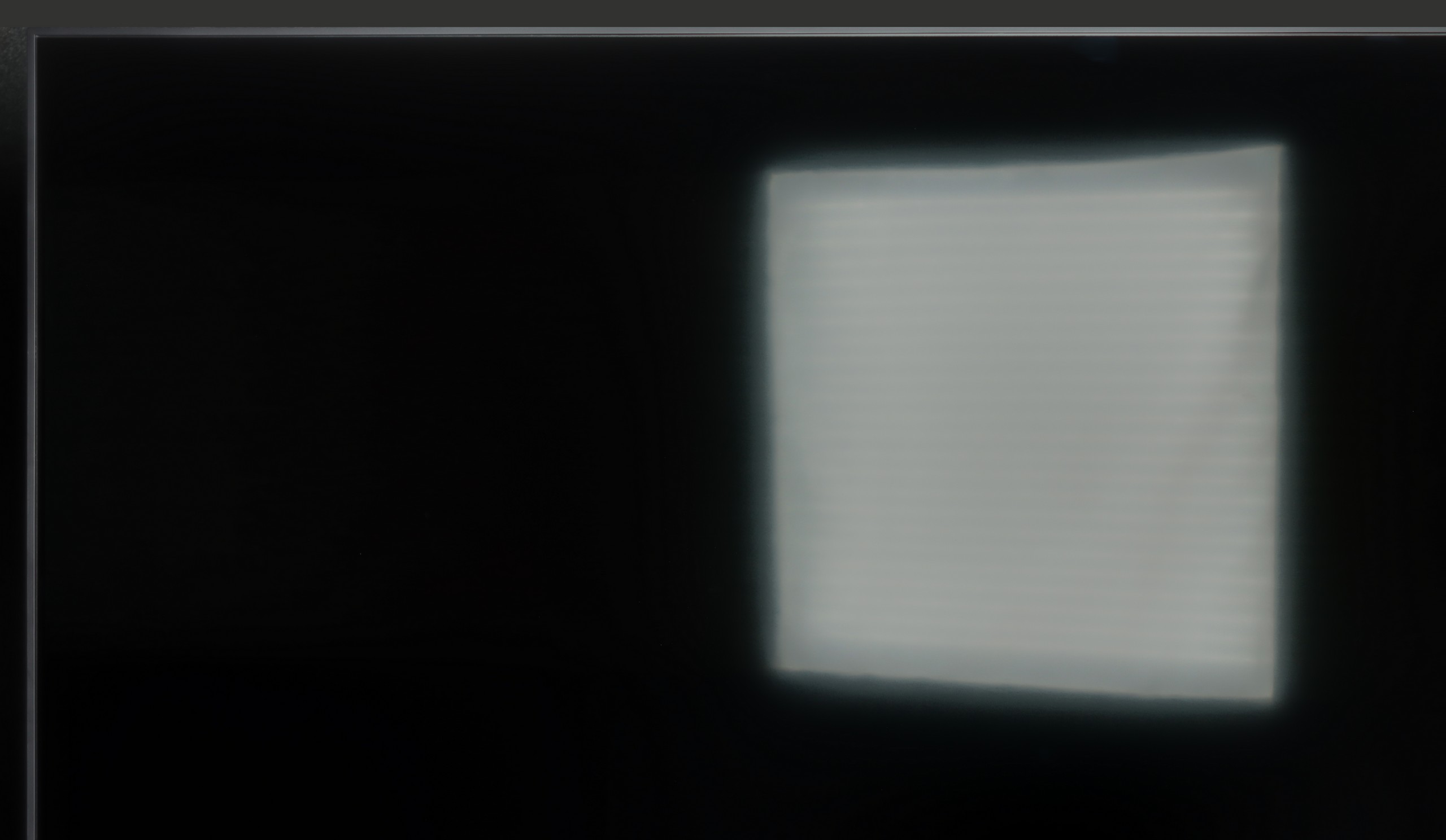
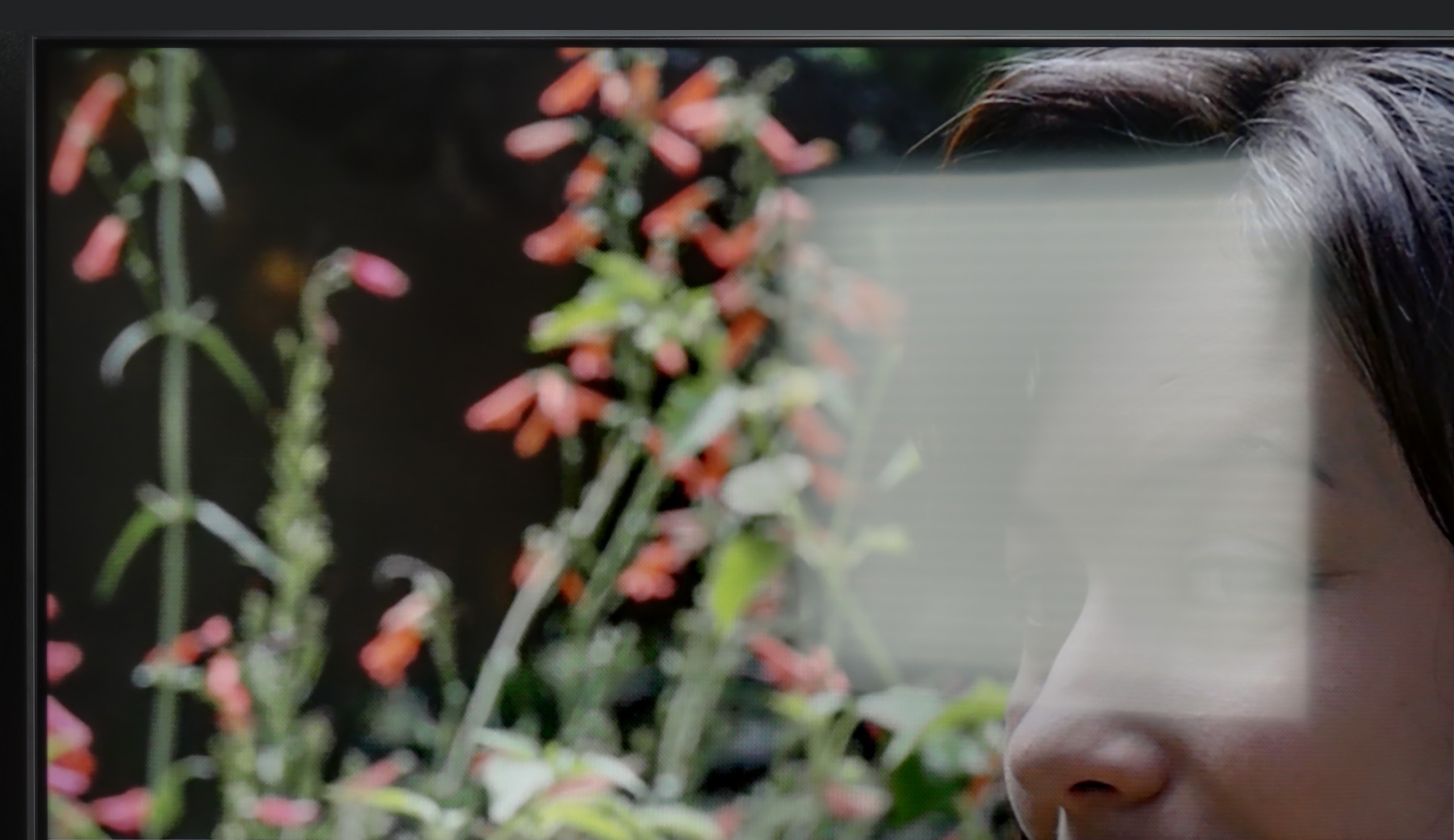
Panel finish: Satin
Reflection suppression: Decent
Black levels during daytime: Good
LG UA7500 with a VA panel performed slightly better when it comes to watching in a bright room. The applied coating handles reflection suppression moderately – it does not eliminate them entirely, but it softens them enough to watch television during the day without significant discomfort. A plus is that the television maintains quite decent colour saturation, so the image does not appear washed out even with incoming light. The brightness itself is also a bit higher than in the IPS variant, reaching around 300 nits, making the screen slightly more resistant to challenging lighting conditions. Of course, this is not a level that will ensure comfort in very sunlit living rooms, but it manages well in typical home conditions.
Panel brightness
Average luminance SDR
LG UA75006LA (VA): 302 cd/m2
LG UA75006LA - TV features
7/10
System: WebOS
System performance: Decent
- HDMI inputs: 3 x HDMI 2.0, 0 x HDMI 2.1
- Outputs: Toslink (Optical audio), eARC (HDMI), ARC (HDMI)
- Network Interfaces: Wi-Fi 2.4GHz, Wi-Fi 5GHz, Ethernet (LAN) 100Mbps
- TV reception: DVB-T, DVB-T2, DVB-S, DVB-S2, DVB-C
Classic features:
Recording to USB (terrestrial TV): Yes
Recording programming: Yes
Picture in Picture (PiP): No
RF remote control (no need to aim at the screen): Infrared
Backlit remote control: No
Teletext: Yes
Audio only mode: Yes
Bluetooth headphones support: Yes
Simultaneous Bluetooth headphones & TV audio: Yes
Smart features:
AirPlay: Yes
Screen mirroring (Windows Miracast): Yes
Voice search: No
Voice search in native language: No
Ability to connect a keyboard and mouse: Yes
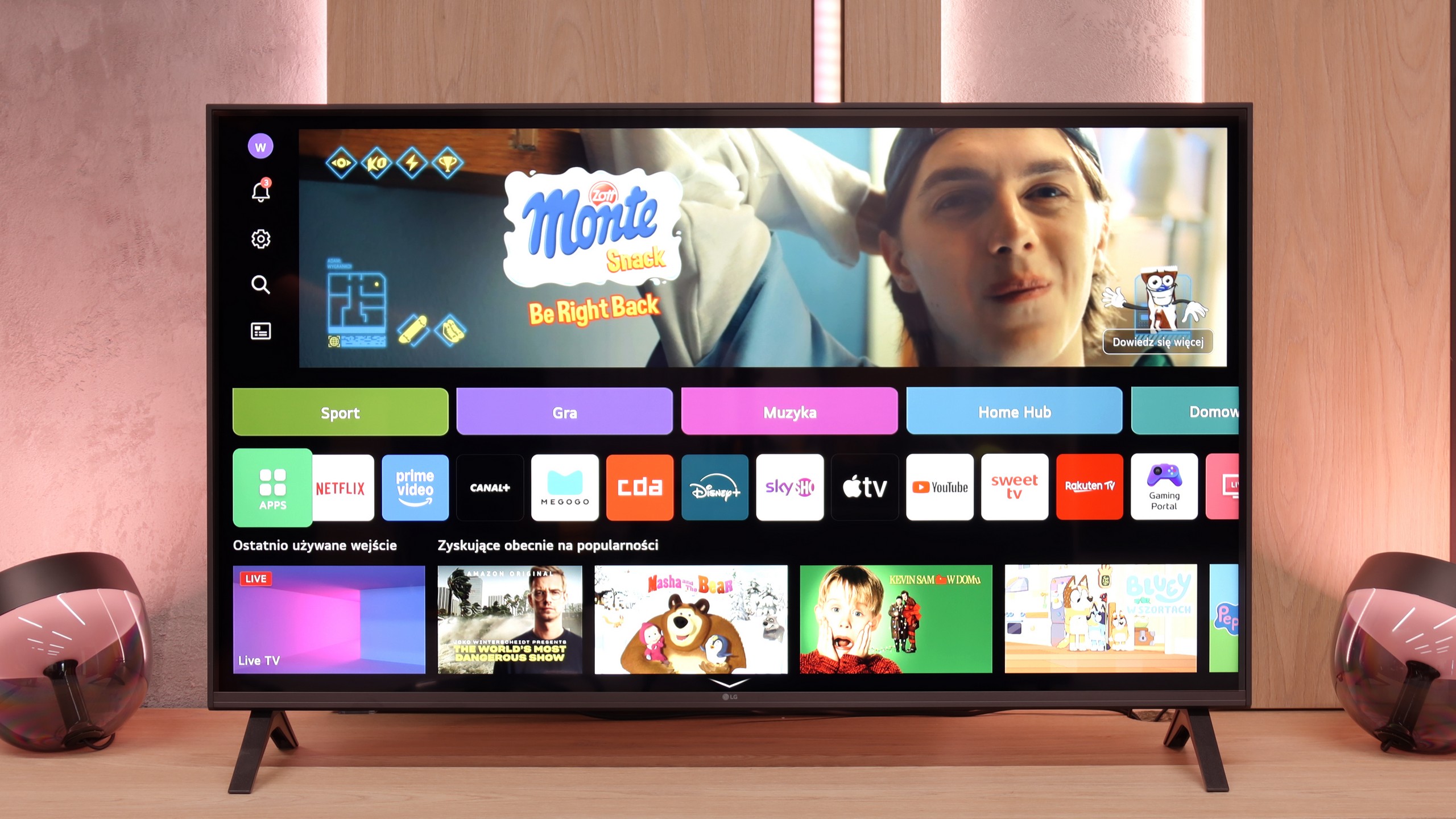







Smart Features: WebOS
A big advantage of the LG UA7500 is the application of the webOS system. We gain access to a rich library of applications, support for AirPlay, screen mirroring and many additional features that allow for really convenient use of the television. Therefore, it is easy to connect a smartphone, watch something from streaming services, or use music applications. However, a downside is that webOS remains quite a "heavy" system and does not operate as smoothly on the UA7500 as it does on more expensive models. The situation is not aided by the fact that the manufacturer has not provided us here with a Magic remote with a cursor, which significantly speeds up navigation. We get a regular infrared remote, lacking that "magic" wand. Of course, it can be purchased separately, but considering the cost, it is often better to pay a bit more for a higher LG model that already includes such a remote.
Classic Features
In more traditional usage, the LG UA7500 also does not disappoint. The remote is equipped with a numeric keypad and a substantial number of buttons, which will certainly be appreciated by users accustomed to older solutions. Additionally, there is the ability to record programmes to USB from built-in tuners and a quite readable EPG interface, which makes planning a television viewing session easier. A downside remains the fact that the remote always requires aiming at the screen – but we believe that most more traditional users will be able to forgive it, viewing it as a familiar and reliable tool.
Sound connection options
HDMI audio:
Other audio outputs:
Toslink: Yes
Wireless audio:
Bluetooth: Yes
Supported audio formats (external HDMI eARC audio):
Dolby Digital Plus 7.1: Yes
Dolby True HD 7.1: No
Dolby Atmos in Dolby Digital Plus (JOC): No
Dolby Atmos in Dolby True HD: No
DTS:X in DTS-HD MA: No
DTS-HD Master Audio: No
Senior accessibility
Numeric keyboard on TV: Yes
Font size adjustment: No
Audio description: Yes
LG UA75006LA - Apps
9.1/10























LG UA75006LA - Playing files from USB
8.2/10

| Maximum photo resolution: | Supported photo formats: |
|---|---|
The media player on the UA7500 works fine – films or music start up without major issues, and this should be sufficient for most people. However, one thing caught our attention: the television does not play all photo formats. In practice, this means that if we upload photos straight from a smartphone to a USB drive, some may simply not open. It's a small detail, but it's worth keeping in mind. Fortunately, you can always use wireless screen sharing to display photos on the screen in another way.
LG UA75006LA - Sound
6/10
81dB
Maximum volume
Supported codecs
(TV speakers)
Dolby Digital Plus 7.1
Dolby True HD 7.1
Dolby Atmos in Dolby Digital Plus (JOC)
Dolby Atmos in Dolby True HD
DTS:X in DTS-HD MA
DTS-HD Master Audio
In terms of sound, the LG UA7500 does not impress with powerful bass or the highest volume, but it plays surprisingly well. Our impression was that it performs better than most of the cheapest budget televisions and does quite well in everyday use. It will be just right for news, programmes, or series.
Sound Quality Test:
Acoustic Measurements
81dBC (Max)
75dBC
LG UA75006LA - Panel details
Software version during testing: 33.20.81
Panel uniformity and thermal imaging:
Backlight Type: White LED

Founder and originator of the "ChooseTV" portal

Journalist, reviewer, and columnist for the "ChooseTV" portal
See articles related to LG UA75006LA (VA):
Shopping Reviews
The best LG televisions 2024 / 2025! Which LG TV to choose? ... 5/9/2025
9/10/2025
10/7/2025

